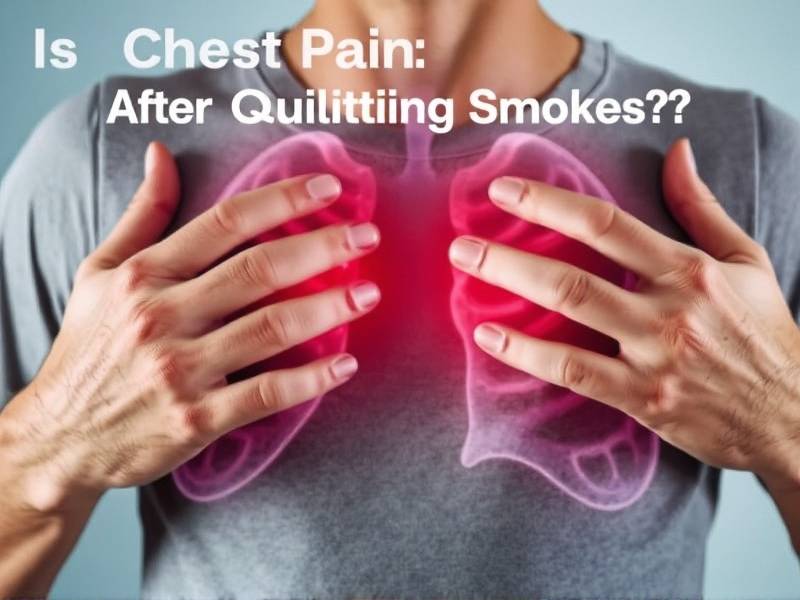Is Chest Pain Common After Quitting Smoking?
Understanding the Link Between Smoking and Chest Pain
Cigarette smoking is a well-known risk factor for various health issues, including heart disease and respiratory problems. One of the common concerns among smokers who are contemplating quitting is the potential for experiencing chest pain after they stop smoking. This article aims to explore this issue, providing insights into why chest pain might occur post-cessation and what steps can be taken to alleviate it.
The Immediate Effects of Quitting Smoking
When individuals quit smoking, their bodies begin a remarkable process of healing. Within hours of quitting, the carbon monoxide levels in the blood start to decrease, improving oxygen supply to the body's tissues. Over time, there is a reduction in heart rate and blood pressure, which can lead to better cardiovascular health.
What Causes Chest Pain After Quitting Smoking?
1. Withdrawal Symptoms
One of the primary reasons for chest pain after quitting smoking is withdrawal symptoms. Nicotine withdrawal can cause stress on the body, leading to discomfort or pain in various parts of the body, including the chest.

2. Reversible Angina
Smokers who have developed reversible angina (a type of chest pain caused by reduced blood flow to the heart) may experience this pain more frequently or intensely when they quit smoking. As their bodies adjust to increased oxygen levels without nicotine's constricting effects on blood vessels, these symptoms may temporarily worsen.
3. Increased Heart Rate and Blood Pressure
Quitting smoking often leads to an increase in heart rate and blood pressure as the body tries to compensate for the lack of nicotine. This can sometimes manifest as chest pain.
How Long Does Chest Pain Last?
The duration of chest pain after quitting smoking can vary from person to person. Some individuals may experience it for a few days or weeks, while others might find that it persists for several months. In most cases, however, chest pain associated with quitting smoking resolves over time as the body adjusts.

Managing Chest Pain
If you experience chest pain after quitting smoking, here are some strategies that may help:
- Stay Hydrated: Drink plenty of water to help flush out toxins from your system.
- Exercise Regularly: Engage in light exercise such as walking or yoga to improve circulation.
- Mindfulness Practices: Techniques like meditation and deep breathing can help manage stress.
- Seek Professional Advice: If you're concerned about your symptoms, consult with a healthcare provider.
Conclusion
While it's true that some individuals may experience chest pain after quitting smoking, this is usually a temporary side effect that resolves as the body heals from years of nicotine exposure. By understanding the causes and taking appropriate measures to manage withdrawal symptoms and stress, most people can successfully navigate this phase of their smoke-free journey.
Remember, quitting smoking is one of the best decisions you can make for your health. The challenges you face during this transition are part of a larger picture of improved well-being and longevity. Keep your focus on long-term benefits rather than short-term discomforts.
